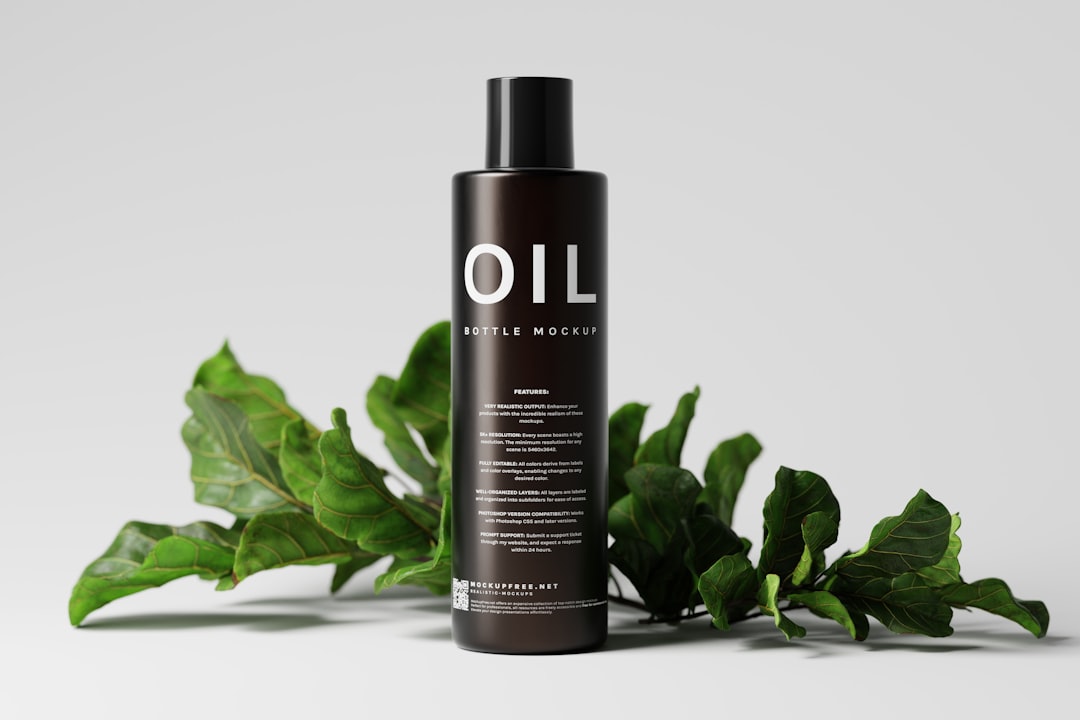Papaya and honey are two natural ingredients that have been used for centuries for their skincare benefits. When combined, they create a powerful enzyme mask that can help to exfoliate, brighten, and nourish the skin. Papaya contains an enzyme called papain, which helps to break down dead skin cells and promote cell turnover, resulting in smoother and more radiant skin. Honey is a natural humectant, meaning it helps to draw moisture into the skin, keeping it hydrated and supple. When these two ingredients are combined, they create a potent mask that can help to improve the overall health and appearance of the skin.
The papaya and honey enzyme mask is suitable for all skin types, including sensitive skin, and can be used to address a variety of skincare concerns, such as dullness, uneven texture, and dryness. This DIY mask is easy to prepare at home and can be used regularly to maintain healthy, glowing skin. In the following sections, we will explore the benefits of papaya and honey for the skin, how to prepare the mask at home, the application and usage of the mask, tips for maximizing its effects, as well as precautions and potential allergies to be aware of. By the end of this article, you will have all the information you need to incorporate this natural skincare treatment into your routine.
Summary
- Papaya and honey enzyme mask is a natural skincare remedy that can help improve the overall health and appearance of the skin.
- Papaya contains enzymes and vitamins that can help exfoliate and brighten the skin, while honey has antibacterial and moisturizing properties.
- To prepare a DIY papaya and honey enzyme mask, simply blend ripe papaya with honey and apply the mixture to the skin for 10-15 minutes before rinsing off.
- The mask can be applied 1-2 times a week to achieve maximum benefits, and it is important to do a patch test before using to avoid potential allergies.
- To maximize the effects of the mask, it is recommended to exfoliate the skin before application and follow up with a moisturizer afterwards.
Benefits of Papaya and Honey for the Skin
Papaya is a tropical fruit that is rich in vitamins A, C, and E, as well as an enzyme called papain. These nutrients work together to exfoliate the skin, promote collagen production, and protect against environmental damage. The papain enzyme in papaya helps to gently dissolve dead skin cells, revealing a brighter and smoother complexion. Additionally, the high vitamin C content in papaya helps to even out skin tone and reduce the appearance of dark spots and hyperpigmentation. Vitamin E in papaya is a powerful antioxidant that helps to protect the skin from free radical damage, while vitamin A promotes cell turnover and regeneration, resulting in firmer and more youthful-looking skin.
Honey is a natural humectant, meaning it helps to draw moisture into the skin and lock it in, keeping the skin hydrated and plump. It also has antimicrobial and anti-inflammatory properties, making it an excellent ingredient for acne-prone or sensitive skin. The antioxidants in honey help to protect the skin from oxidative stress and promote healing, making it an effective treatment for wounds, burns, and other skin irritations. When used in combination with papaya, honey helps to enhance the exfoliating and nourishing effects of the mask, leaving the skin soft, smooth, and radiant. Overall, the combination of papaya and honey provides a wide range of benefits for the skin, making them an ideal choice for a natural enzyme mask.
How to Prepare a DIY Papaya and Honey Enzyme Mask
To prepare a DIY papaya and honey enzyme mask at home, you will need a few simple ingredients: ripe papaya, raw honey, and a blender or food processor. Start by cutting a ripe papaya in half and scooping out the seeds. Then, scoop out the flesh of the papaya and place it into the blender or food processor. Add a tablespoon of raw honey to the papaya flesh. Blend the mixture until it forms a smooth paste with no lumps. If the mixture is too thick, you can add a small amount of water to thin it out.
Once the mask is ready, transfer it to a clean bowl. You can also add a few drops of essential oils such as lavender or tea tree oil for added benefits. Essential oils can help to soothe the skin, reduce inflammation, and provide additional antimicrobial properties. However, it’s important to perform a patch test before adding essential oils to ensure that you are not allergic or sensitive to them. Once the mask is prepared, it can be stored in an airtight container in the refrigerator for up to one week. This DIY papaya and honey enzyme mask is simple to make and can be easily incorporated into your skincare routine for regular use.
Application and Usage of the Mask
Before applying the papaya and honey enzyme mask to your face, it’s important to start with clean skin. Use a gentle cleanser to remove any makeup, dirt, or impurities from the skin. Then, pat your skin dry with a clean towel. Next, apply a thin layer of the mask to your face using clean fingertips or a brush. Avoid the delicate eye area and be gentle when applying the mask to prevent any irritation. Allow the mask to sit on your skin for 15-20 minutes to allow the enzymes in papaya and the nourishing properties of honey to work their magic.
After 15-20 minutes have passed, rinse off the mask with lukewarm water. Use gentle circular motions to massage the mask off your skin, taking advantage of the exfoliating properties of papain in papaya. Once all traces of the mask have been removed, pat your skin dry with a clean towel. Follow up with your regular skincare routine, such as applying toner, serum, and moisturizer. You can use this DIY papaya and honey enzyme mask 1-2 times per week for best results. With regular use, you will notice improvements in your skin’s texture, brightness, and overall health.
Tips for Maximizing the Effects of the Mask
To maximize the effects of the papaya and honey enzyme mask, there are a few tips you can follow. Firstly, choose ripe papayas for your mask as they contain higher levels of enzymes and nutrients compared to unripe ones. Ripe papayas are also softer and easier to blend into a smooth paste. Additionally, using raw honey is essential as it retains all its natural enzymes and nutrients that benefit the skin. When preparing the mask, ensure that it is blended into a smooth consistency without any lumps for easy application.
Another tip for maximizing the effects of the mask is to perform a patch test before applying it to your face. This is especially important if you have sensitive or allergy-prone skin. Apply a small amount of the mask to a patch of skin on your arm and wait 24 hours to see if any adverse reactions occur. If there are no signs of irritation or allergy, you can proceed with using the mask on your face. Lastly, store any leftover mask in an airtight container in the refrigerator to preserve its freshness and efficacy. By following these tips, you can ensure that you get the most out of your DIY papaya and honey enzyme mask.
Precautions and Potential Allergies
While papaya and honey are natural ingredients that are generally safe for use on the skin, there are some precautions and potential allergies to be aware of. If you have a known allergy to latex, you may also be allergic to papaya as it contains enzymes that are similar to those found in latex. Perform a patch test before using the mask on your face if you are unsure about any potential allergies. Additionally, if you have sensitive or reactive skin, it’s best to consult with a dermatologist before using this mask.
When using raw honey in the mask, be cautious if you have an allergy to bee products such as pollen or propolis. While rare, some individuals may experience allergic reactions when honey comes into contact with their skin. If you experience any redness, itching, or swelling after using the mask, discontinue use immediately and seek medical advice if necessary. It’s always better to err on the side of caution when it comes to skincare products, especially if you have known allergies or sensitivities.
Conclusion and Final Thoughts
In conclusion, the papaya and honey enzyme mask is a natural skincare treatment that offers a wide range of benefits for the skin. Papaya contains enzymes that help to exfoliate and brighten the skin, while honey provides nourishment and hydration. When combined, these two ingredients create a potent mask that can be used regularly to maintain healthy, glowing skin. By following the simple steps outlined in this article for preparing and using the mask, as well as being mindful of potential allergies and precautions, you can incorporate this DIY treatment into your skincare routine with confidence.
Whether you have concerns about dullness, uneven texture, dryness or simply want to pamper your skin with natural ingredients, the papaya and honey enzyme mask is a versatile option that is suitable for all skin types. With regular use, you can expect improvements in your skin’s overall health and appearance. Remember to follow the tips provided for maximizing the effects of the mask and be mindful of any potential allergies or sensitivities. By taking these factors into consideration, you can enjoy all the benefits that this natural skincare treatment has to offer.
Enhance Your Natural Glow with a DIY Papaya and Honey Enzyme Mask is a fantastic way to pamper your skin at home. This rejuvenating mask can help to exfoliate and brighten your complexion, leaving you with a radiant glow. If you’re interested in learning more about the science behind skincare ingredients, you might want to check out the article on unveiling the power of niacinamide. It provides a deep dive into the skin-boosting benefits of this powerful ingredient, offering valuable insights for anyone looking to enhance their skincare routine.
FAQs
What are the benefits of using a papaya and honey enzyme mask?
Using a papaya and honey enzyme mask can help to exfoliate the skin, remove dead skin cells, and promote a natural glow. Papaya contains enzymes that can help to brighten the skin, while honey has antibacterial properties and can help to moisturize and soothe the skin.
How do you make a DIY papaya and honey enzyme mask?
To make a DIY papaya and honey enzyme mask, you will need to blend together ripe papaya and honey until smooth. Apply the mixture to your face and leave it on for 15-20 minutes before rinsing off with warm water.
How often should you use a papaya and honey enzyme mask?
It is recommended to use a papaya and honey enzyme mask once or twice a week to help maintain a healthy and glowing complexion. Overuse of exfoliating masks can irritate the skin, so it’s important to use them in moderation.
Are there any precautions to consider when using a papaya and honey enzyme mask?
Papaya contains enzymes that can be quite potent, so it’s important to do a patch test before using the mask to ensure that you don’t have any adverse reactions. Additionally, if you have sensitive skin, it’s best to consult with a dermatologist before using this mask.
Can a papaya and honey enzyme mask help with acne?
The antibacterial properties of honey and the exfoliating effects of papaya can help to reduce acne and prevent breakouts. However, it’s important to note that individual results may vary, and it’s best to consult with a dermatologist for personalized acne treatment.




